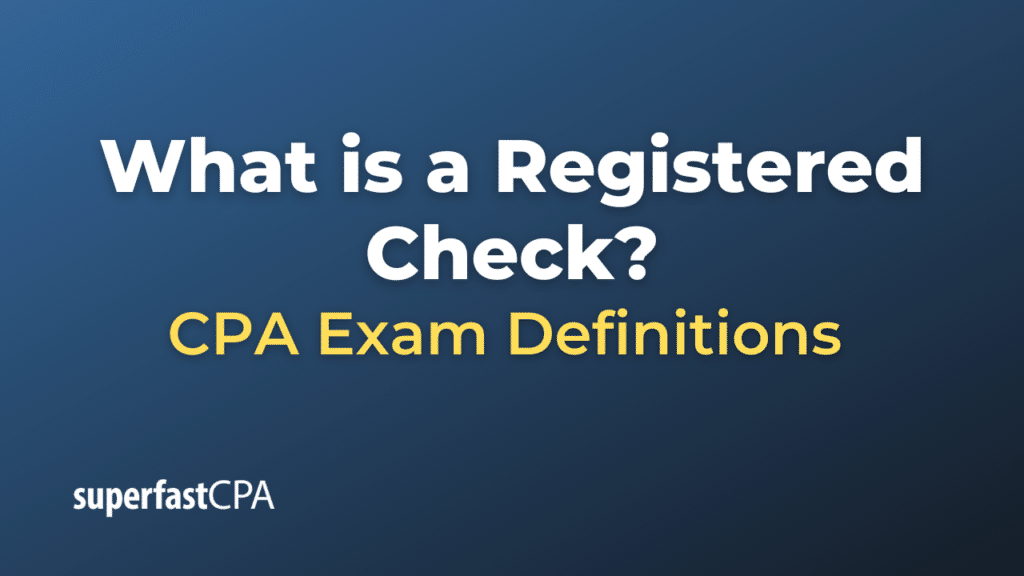Registered Check
A registered check (also sometimes referred to as a cashier’s check or a bank check) is a check that is issued and guaranteed by a bank. Unlike a standard personal check, where the funds are drawn from an individual’s account when the check is cashed, a registered check is drawn directly from the bank’s own funds. This provides an added layer of security for the recipient because it ensures that the funds are available and that the check will not bounce due to insufficient funds in the issuer’s account.
Here’s how the process of obtaining a registered check typically works:
- Request: An individual or a business goes to their bank and requests a registered check.
- Funds Transfer: The bank immediately withdraws the specified amount from the requester’s account.
- Check Issuance: The bank then issues a check from its own funds for the desired amount.
- Security and Authentication: The check typically has enhanced security features to prevent fraud and is stamped or marked to indicate that it is registered or certified.
Given the immediate transfer of funds and the bank’s guarantee, registered checks are considered more secure than personal checks. They are often used in transactions where the parties require a secure form of payment, such as real estate transactions, car purchases, or other large transactions.
It’s worth noting, however, that while registered checks offer security, they are not entirely immune to fraud. There have been instances where fraudsters counterfeit these checks or alter them. As a result, it’s always advisable for recipients to verify the authenticity of a registered check with the issuing bank before accepting it as payment or releasing goods or services.
Example of a Registered Check
Let’s use a real-world scenario involving the purchase of a used car.
Lisa is looking to buy a used car. After some searching, she finds a car she likes being sold by Mark. The price of the car is $10,000. Given the substantial amount of money involved, Mark is hesitant to accept a personal check from Lisa, fearing it might bounce due to insufficient funds or even potential fraud. He asks Lisa to provide payment using a registered check to ensure the funds are guaranteed.
The Process:
- Bank Visit: Lisa goes to her bank and requests a registered check for $10,000. She provides the bank with the details, including the payee’s name (Mark).
- Funds Transfer: The bank immediately deducts $10,000 from Lisa’s account.
- Issuance of Registered Check: The bank then creates a check drawn on its own funds for $10,000, made out to Mark. This check has specific security features, markings, and stamps to indicate that it’s a registered check.
- Car Purchase: Lisa gives the registered check to Mark in exchange for the car. Since the check is issued and guaranteed by the bank, Mark feels secure that the funds are guaranteed and that there’s no risk of the check bouncing.
- Check Deposit: Mark deposits the registered check into his account. Since the check is backed by the bank’s funds, it’s processed quickly without the usual waiting period associated with personal checks.
Lisa gets her desired car, and Mark receives his payment securely without the risk associated with personal checks. The transaction is smooth, and both parties are satisfied.
This example illustrates the convenience and security that registered checks offer, especially in scenarios where trust might not be fully established between the parties or where the transaction amounts are substantial.













